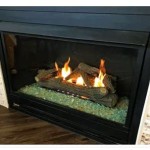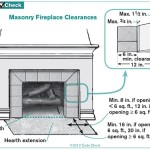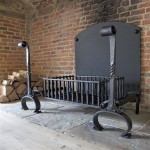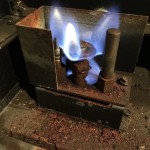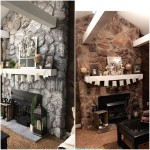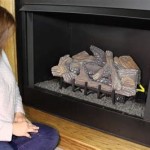Paint Techniques for Brick Fireplaces
Brick fireplaces are a common architectural feature in many homes, adding character and warmth to living spaces. However, the natural brick aesthetic may not always align with the desired interior décor. Painting a brick fireplace can be a transformative project, allowing homeowners to customize the look and feel of their living space. This article will explore various paint techniques suitable for brick fireplaces, discussing preparation, paint selection, and application methods to achieve a professional and lasting finish.
Before embarking on a painting project, it is crucial to understand the inherent properties of brick. Brick is a porous material, which means it readily absorbs liquids. This characteristic presents both challenges and opportunities when painting. The porous nature necessitates thorough preparation to ensure proper paint adhesion and prevent moisture-related issues. Conversely, the porosity allows paint to penetrate the brick, creating a durable bond when executed correctly.
The success of any paint project, particularly one involving brick, hinges on meticulous preparation. Neglecting this stage can lead to peeling, uneven coverage, and ultimately, a disappointing result. The following steps outline the essential preparation process for painting a brick fireplace.
Surface Preparation: Cleaning and Repair
The first step in preparing a brick fireplace for painting is thorough cleaning. Over time, brick surfaces accumulate dust, soot, grease, and other contaminants. These substances can interfere with paint adhesion and compromise the final finish. The cleaning process typically involves several stages:
Dry Brushing: Begin by using a stiff-bristled brush, such as a wire brush or scrub brush, to remove loose debris from the brick surface. Pay close attention to crevices and mortar joints, as these areas tend to accumulate significant amounts of dirt.
Washing: After dry brushing, wash the brick surface with a solution of water and mild detergent. Trisodium phosphate (TSP) is an effective cleaning agent for heavily soiled brick, but it should be used with caution and proper protective equipment, as it can be irritating to the skin and eyes. Follow the manufacturer's instructions carefully. Apply the cleaning solution with a sponge or brush, scrubbing the brick to remove embedded dirt. Rinse thoroughly with clean water to remove any residue from the cleaning solution.
Rinsing: Adequate rinsing is crucial to remove all traces of cleaning agents. Leftover residue can interfere with paint adhesion and cause premature paint failure. Use a garden hose with a spray nozzle to thoroughly rinse the brick surface. Allow the brick to dry completely before proceeding to the next step.
Repairing: Prior to painting, inspect the brick surface for any damage, such as cracks, chips, or loose mortar. Addressing these issues before painting will ensure a smooth and uniform finish. Use a masonry patching compound to fill any cracks or chips in the brick. Apply the compound according to the manufacturer's instructions, and allow it to dry completely. If the mortar joints are crumbling or missing, re-point them with fresh mortar. This process involves carefully removing the old mortar and applying new mortar to the joints. Once the repairs are complete, allow the patching compound and mortar to cure fully before moving on to priming.
Selecting the Right Paint and Primer
Choosing the correct paint and primer is critical for achieving a durable and aesthetically pleasing finish on a brick fireplace. The porous nature of brick and the potential for exposure to heat necessitate careful consideration of the paint's properties and composition.
Primer Selection: Priming is an essential step in painting brick. A primer serves several important functions: it seals the porous surface of the brick, preventing the paint from being absorbed excessively. It also provides a uniform base for the paint, ensuring even coverage and color consistency. Furthermore, a primer enhances paint adhesion, reducing the risk of peeling or chipping. For brick fireplaces, an acrylic latex primer or a masonry primer is recommended. Acrylic latex primers offer good adhesion, durability, and resistance to moisture. Masonry primers are specifically formulated for use on porous surfaces like brick and concrete. They are designed to penetrate deeply into the brick, providing a strong bond for the paint. Apply the primer according to the manufacturer's instructions, typically using a brush, roller, or sprayer. Allow the primer to dry completely before applying the paint.
Paint Selection: The ideal paint for a brick fireplace should be durable, heat-resistant, and easy to clean. Acrylic latex paint is a popular choice for brick fireplaces due to its durability, flexibility, and resistance to cracking and peeling. It is also relatively easy to clean and maintain. Alternatively, masonry paint, also known as elastomeric paint, is specifically formulated for masonry surfaces. It is highly durable, water-resistant, and able to withstand temperature fluctuations. Choose a paint with a matte or satin finish for a more traditional and subtle look. A semi-gloss or gloss finish can be used for a more contemporary and reflective appearance. Avoid oil-based paints, as they can become brittle and crack over time, especially when exposed to heat. Consider selecting a paint with a low-VOC (volatile organic compound) formulation to minimize harmful emissions and improve air quality.
Tinting and Color Choice: The color selection will heavily influence the overall aesthetic of the fireplace and the room. Light colors can brighten a space and make it feel larger, while darker colors can create a more dramatic and intimate atmosphere. Consider the existing décor and color scheme of the room when choosing a paint color. It is generally recommended to test a small area with a sample of the chosen paint color to ensure it complements the surroundings. Many paint stores offer tinting services to create custom colors that perfectly match your desired aesthetic. When having paint tinted, ensure consistency across all cans to avoid slight color variations.
Application Techniques for a Professional Finish
Proper application techniques are crucial for achieving a smooth, even, and professional-looking finish on a brick fireplace. Several methods can be employed, each with its own advantages and disadvantages. The chosen method depends on personal preference, the desired aesthetic, and the texture of the brick.
Brushing: Applying paint with a brush is a traditional method that allows for precise control and detailed work. A brush is particularly useful for painting mortar joints and reaching into crevices. Use a high-quality paintbrush with synthetic bristles for applying latex paint. Natural bristle brushes are better suited for oil-based paints, which are not recommended for this project. Apply the paint in thin, even coats, working in small sections at a time. Use a stippling motion to work the paint into the pores of the brick. Avoid applying too much paint at once, as this can lead to drips and runs. Brush marks can be minimized by using a light touch and blending the paint smoothly. For larger areas, a wider brush can be used to speed up the process.
Rolling: Rolling is a faster and more efficient method for painting large, flat surfaces. A roller is particularly useful for applying paint to the faces of the bricks. Choose a roller with a nap thickness appropriate for the texture of the brick. A thicker nap is better suited for rough or uneven surfaces, as it will allow the roller to reach into the crevices. Apply the paint in thin, even coats, overlapping each stroke slightly to ensure complete coverage. Avoid pressing too hard on the roller, as this can cause the paint to splatter. A roller frame with an extension pole can be used to reach high areas of the fireplace without the need for a ladder.
Spraying: Spraying is the fastest and most efficient method for painting a brick fireplace, particularly one with a highly textured surface. A sprayer provides even coverage and can reach into crevices that are difficult to access with a brush or roller. There are two main types of sprayers: airless sprayers and HVLP (high volume, low pressure) sprayers. Airless sprayers are more powerful and can cover large areas quickly, but they require more skill and experience to operate. HVLP sprayers provide a finer finish and are easier to control, but they are less efficient for large projects. When spraying, it is essential to protect the surrounding areas from overspray with drop cloths and painter's tape. Apply the paint in thin, even coats, overlapping each stroke slightly. Maintain a consistent distance between the sprayer and the brick surface to ensure uniform coverage. Wear appropriate safety gear, including a respirator and eye protection, when spraying paint.
Specialty Techniques: Beyond solid color application, several specialty paint techniques can be employed to achieve a unique and customized look for a brick fireplace. These techniques include:
Whitewashing: Whitewashing involves applying a diluted layer of white paint to the brick, allowing some of the original brick color to show through. This technique creates a rustic and weathered appearance. The paint is typically diluted with water to achieve the desired translucency. Apply the whitewash with a brush or rag, and then wipe off the excess with a clean cloth. This technique is suitable for fireplaces where the underlying brick character is desired, but with a lighter and more subtle tone.
German Schmear: This technique involves applying a mixture of mortar or grout and paint to the brick, creating a textured and aged appearance. The mixture is typically applied with a trowel or sponge, and then partially removed to reveal some of the underlying brick. This technique adds dimension and character to the fireplace, creating a unique and visually appealing finish. The ratio of mortar/grout to paint can be adjusted to achieve varying degrees of texture and coverage.
Dry Brushing: Dry brushing involves applying a small amount of paint to a dry brush and then lightly brushing it across the brick surface. This technique creates a subtle and textured effect, highlighting the natural variations in the brick. Different colors can be layered to create depth and dimension. This technique is ideal for adding highlights and shadows to a painted brick fireplace.
Regardless of the chosen application technique, it is crucial to apply multiple thin coats of paint rather than one thick coat. Thin coats dry more evenly and are less prone to drips and runs. Allow each coat to dry completely before applying the next. Inspect the finished surface carefully for any imperfections, and touch up as needed. With careful preparation and proper application techniques, a brick fireplace can be transformed into a stunning focal point in any home.

Paint Fireplace Brick

How To Paint A Brick Fireplace And The Best Use Craftivity Designs

The Top Color Ideas For Painting A Brick Fireplace 700 N Cottage

How To Paint A Brick Fireplace

Ultimate Guide For Fireplace Painting

Mortar Wash Brick Fireplace Makeover Dimples And Tangles

13 Inspiring Colours To Paint Your Brick Fireplace

How To Paint A Brick Fireplace Young House Love

How To Update A Brick Fireplace With Chalk Paint Diy Beautify Creating Beauty At Home

Diy Painted Brick Fireplace Makeover
Related Posts

